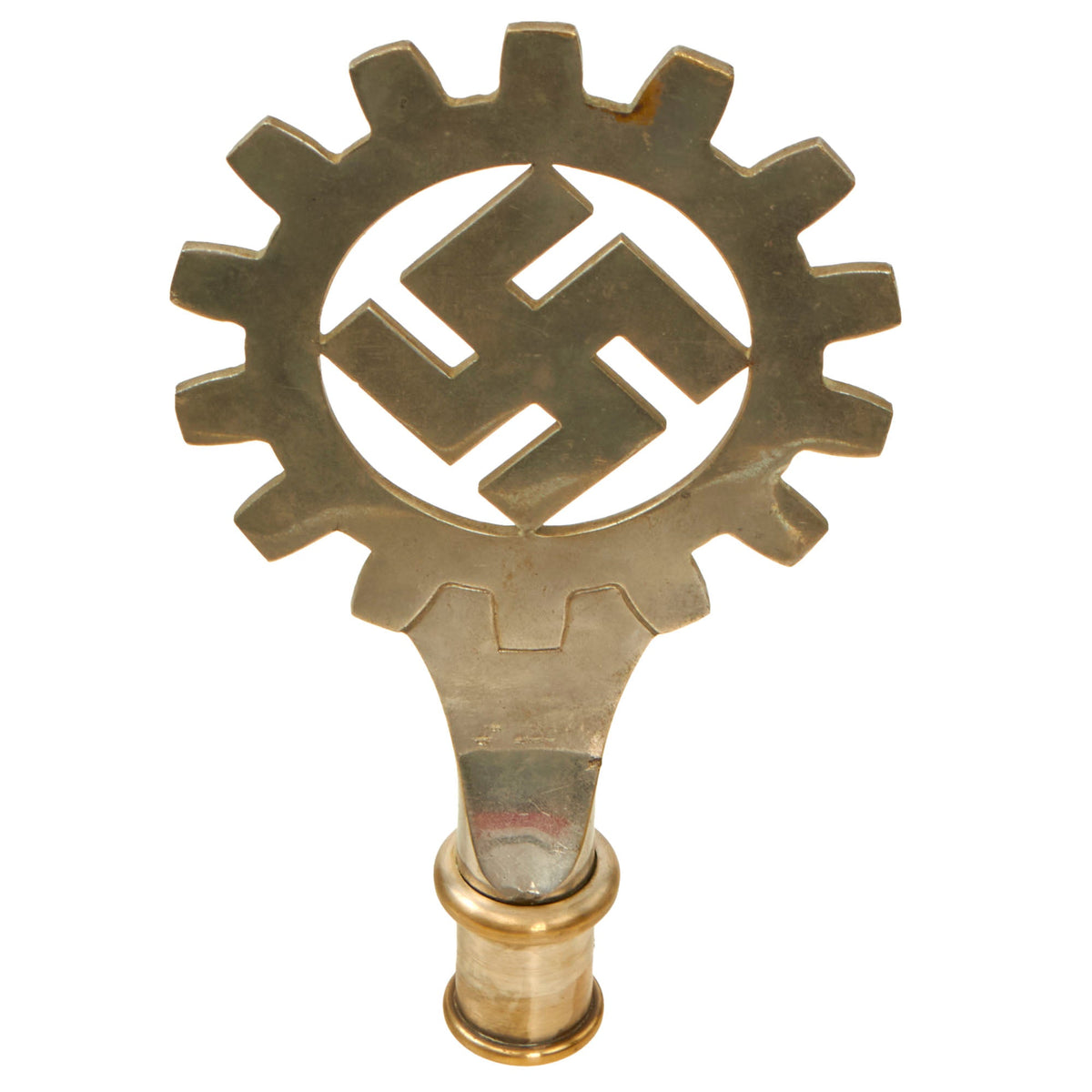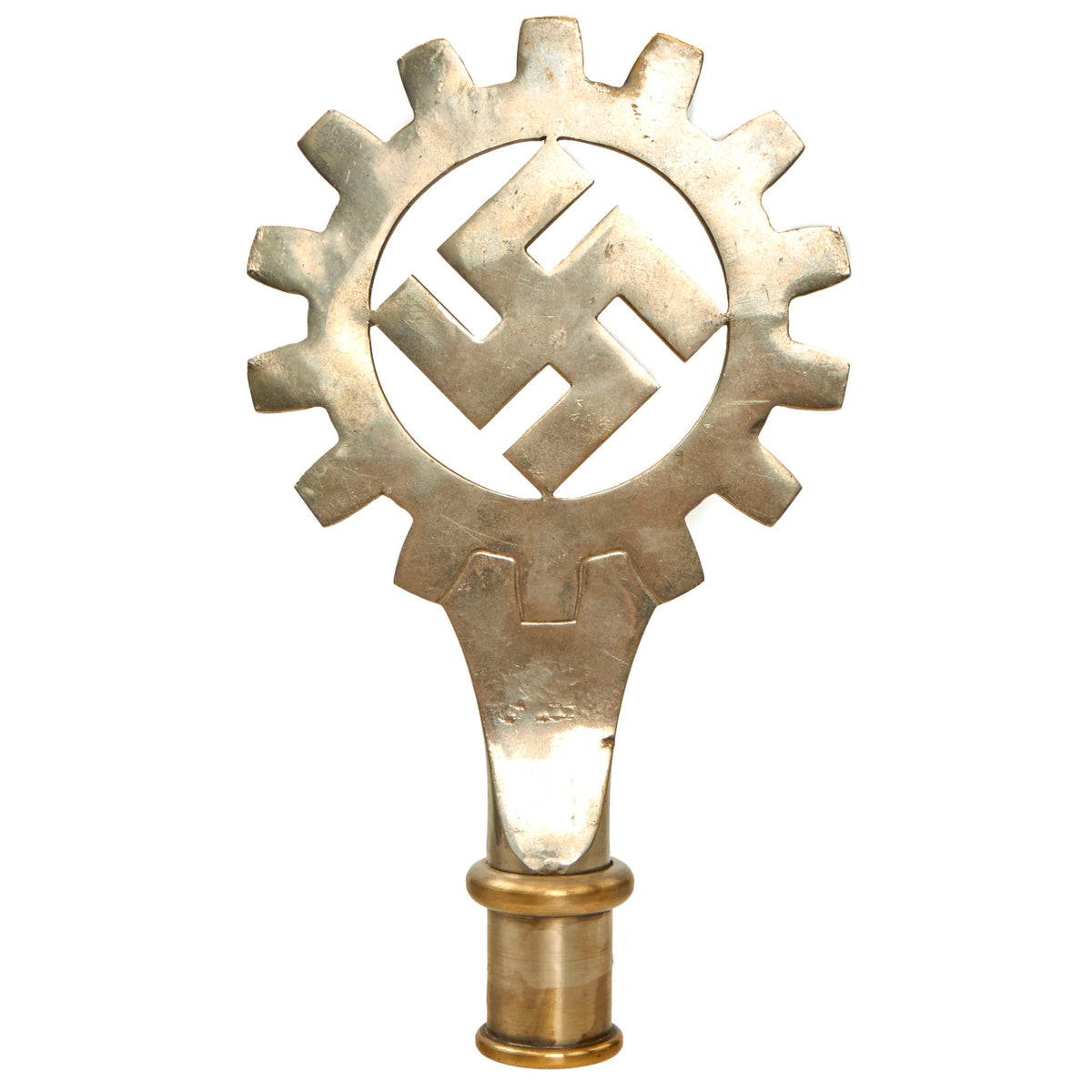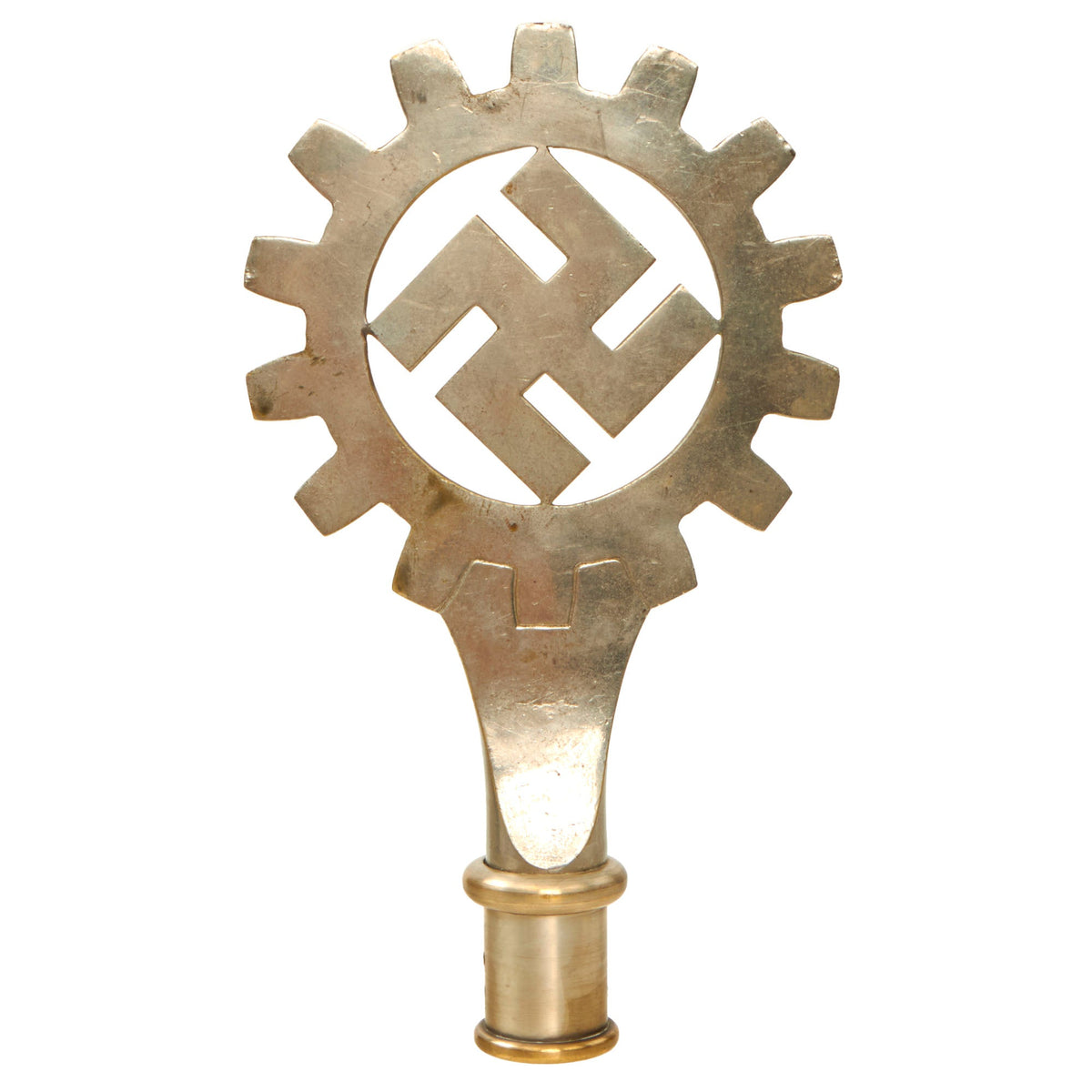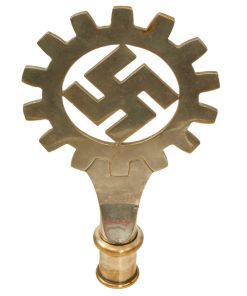Original German WWII DAF Labor Front Flag Pole Finial by F. W. Assmann & Söhne – RZM M5/8 – Deutsche Arbeitsfront Original Items
$ 695,00 $ 208,50
Original Item: Only One Available. This is a very nice WWII German Labor Front (Deutsche Arbeitsfront – DAF) Flag Pole Finial or Topper (Fahnenstange Endstück) Eagle. It is constructed of nickel-plated brass, and is the later design. It is marked on the base with an ((RZM)) Code M5/8, for the famous F. W. Assmann & Söhne of Lüdenscheid.
The finial measures approximately 10” long with the gear having a diameter of 5⅞”. This piece would go atop the golden cog honor flag awarded to manufacturers during the Reich. This piece takes the form of the DAF emblem of a fourteen-tooth cog wheel encompassing a canted swas.
These Flag Pole Finials are extremely hard to find, as most were destroyed or melted back down as scrap. This is one in very nice condition, ready for further research and display!
With the dissolution of all Free Trade Unions in Germany in May 1933 the Deutsche Arbeitsfront, (German Labor Front), was established to replace the unions and to educate the workers in industry and commerce for smooth and efficient operation of all labor in the Third Reich. In October 1934 the DAF was given official status as a sub-section of the NSDAP and in March 1936 it was recognized as an independent NSDAP affiliated association and granted control of its own monetary budget.
Virtually all of the myriad military, civil, political and paramilitary uniformed organizations in existence during the Third Reich had their own flags and standards as part of their organizational regalia. The flags were carried in parades and rallies. In addition to the special flags, most organizations had special pole tops specific to that group, to further distinguish their unique standards. The pole tops often bore either National eagles, organizational emblems, or typical Third Reich patriotic motifs. The emblem would be atop a sleeve into which the flag pole (generally a wood pole with a black finish) would fit. These were designed to be visually impressive pieces of regalia, and are often very eye-catching. Most Third Reich pole tops did not survive the war or its aftermath.
Fast Shipping with Professional Packaging
Thanks to our longstanding association with UPS FedEx DHL, and other major international carriers, we are able to provide a range of shipping options. Our warehouse staff is expertly trained and will wrap your products according to our exact and precise specifications. Prior to shipping, your goods will be thoroughly examined and securely secured. We ship to thousands clients each day across multiple countries. This shows how we're dedicated to be the largest retailer on the internet. Warehouses and distribution centres can be located throughout Europe as well as the USA.
Note: Orders with more than one item will be assigned a processing date depending on the item.
Before shipping before shipping, we'll conduct a thorough inspection of the items you have ordered. Today, the majority of orders will be delivered within 48 hours. The delivery time will be between 3-7 days.
Returns
The stock is dynamic and we cannot completely manage it because multiple stakeholders are involved, including our factory and warehouse. So the actual stock may alter at any time. It's possible that you may not receive your order once the order has been made.
Our policy is valid for a period of 30 days. If you don't receive the product within 30 days, we are not able to issue a refund or an exchange.
You can only return an item if it is unused and in the same state as the day you received it. You must have the item in its original packaging.
Related products
Uncategorized
Uncategorized
Uncategorized
Uncategorized
Uncategorized
Uncategorized
Uncategorized
Uncategorized
Armored Burgonet Helmet & Polearm from Scottish Castle Leith Hall Circa 1700 Original Items
Uncategorized
Uncategorized
Uncategorized
Uncategorized
Band of Brothers ORIGINAL GERMAN WWII Le. F.H. 18 10.5cm ARTILLERY PIECE Original Items
Uncategorized
Uncategorized
Uncategorized
Uncategorized
Uncategorized
Uncategorized
Angolan Rebel 1970s era 60mm Inert Display Mortar from Angolan Civil War Original Items
Uncategorized
Uncategorized
Armoured Fighting Vehicles of the World: AFVs of World War One (Hardcover Book) New Made Items












































































